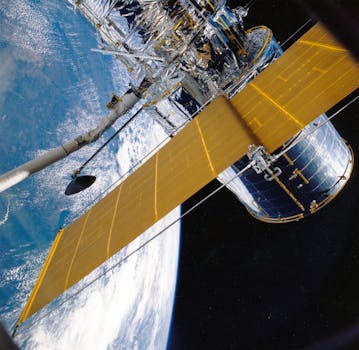GEO Satellites: Understanding the Technology and Applications of Geostationary Orbit Satellites
GEO satellites, or geostationary orbit satellites, are a type of satellite that orbits the Earth at an altitude of approximately 36,000 kilometers above the equator. At this altitude, the satellite’s orbital period matches the Earth’s rotational period, allowing it to remain stationary in the sky relative to a fixed point on the Earth’s surface. This unique characteristic makes GEO satellites ideal for a wide range of applications, including telecommunications, navigation, and weather forecasting.
GEO satellites have been in use for decades, with the first geostationary satellite, Syncom 2, launched in 1963. Since then, the technology has evolved significantly, with modern GEO satellites offering higher bandwidth, greater reliability, and improved functionality. Today, there are hundreds of GEO satellites in orbit, providing critical services to millions of people around the world.
How GEO Satellites Work
GEO satellites work by transmitting and receiving signals to and from Earth-based stations. The satellite’s antenna receives signals from the Earth station and retransmits them back to Earth, allowing for communication between two distant points. The satellite’s payload, which includes transponders, antennas, and other equipment, is designed to support a specific application, such as telecommunications, navigation, or weather forecasting.
The geostationary orbit is a unique environment that poses significant challenges for satellite design and operation. The high altitude and harsh radiation environment require specialized materials and designs to ensure the satellite’s longevity and performance. Additionally, the satellite’s station-keeping maneuvers, which are necessary to maintain its position in orbit, require precise control and navigation systems.
Applications of GEO Satellites
GEO satellites have a wide range of applications, including telecommunications, navigation, weather forecasting, and Earth observation. In telecommunications, GEO satellites provide critical services such as television broadcasting, broadband internet, and mobile connectivity. Navigation systems, such as GPS, rely on GEO satellites to provide location information and timing signals. Weather forecasting and Earth observation satellites use GEO satellites to collect data on atmospheric conditions, ocean currents, and land use patterns.
In addition to these traditional applications, GEO satellites are also being used for new and innovative purposes, such as satellite-based internet of things (IoT) connectivity, precision agriculture, and disaster response. The development of new satellite constellations, such as OneWeb and SpaceX’s Starlink, is expected to further expand the use of GEO satellites and enable new services and applications.
Challenges and Opportunities
Despite the many benefits of GEO satellites, there are also significant challenges and opportunities associated with their use. One of the major challenges is the increasing congestion in the geostationary orbit, which can lead to interference and collisions between satellites. The growing demand for satellite services is driving the development of new technologies and innovations, such as advanced propulsion systems and more efficient antenna designs.
Another challenge is the regulatory environment, which is evolving to address the growing number of satellites in orbit. The International Telecommunication Union (ITU) and other regulatory bodies are working to develop new guidelines and standards for satellite operations, including frequency allocation and orbital debris mitigation.
Despite these challenges, the opportunities presented by GEO satellites are significant. The development of new satellite constellations and the expansion of existing services are expected to drive growth and innovation in the satellite industry. The use of GEO satellites for new and innovative applications, such as satellite-based IoT connectivity and precision agriculture, is also expected to create new opportunities for businesses and individuals alike.
